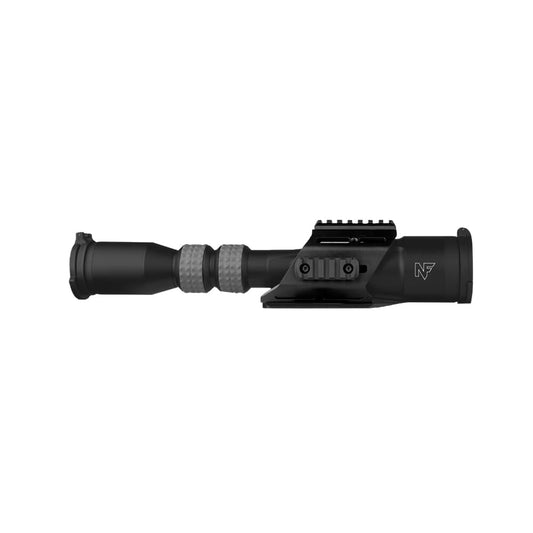

Nightforce CFS 6-36x50 Spotting Scope w/MOA-XTs Reticle & Accessory Cage Kit C697 is engineered for precision shooting and long-range observation. The scope’s compact design allows for easy packing, ensuring it won’t snag on gear during transport. Ergonomic controls with knurled rubber rings provide a full 120° of rotation for quick adjustments in any environment. The included Spotting Scope Accessory Cage enhances versatility, letting you mount various accessories for tailored performance in the field.
Featuring the innovative MOA-XTs reticle, this scope supports both low and high magnification settings, facilitating seamless communication between shooter and spotter. Its rugged construction ensures durability, providing clarity and reliability whether scouting landscapes or tracking game at a distance. The Nightforce CFS is designed to enhance your shooting experience with practical features that cater to both tactical and recreational users.
Features:
- STREAMLINED DESIGN for snag-free carrying in your pack.
- ERGONOMIC CONTROLS for effortless adjustments, even with gloves on.
- ACCESSORY CAGE with 5 M-LOK locations for customizable configurations.
- MOA-XTs RETICLE for intuitive shooting and spotter communication.
- VARIABLE MAGNIFICATION from 6x to 36x for versatile viewing at any distance.
- HIGH-QUALITY OPTICS to ensure maximum image clarity without distortion.
- DURABLE CONSTRUCTION to withstand harsh weather conditions.
- LIGHTWEIGHT design at 33.7 ounces for easy transport.
Technical Specifications Table
| Specification |
|---|
You May Also Like
Here’s some of our most similar products people are buying. Click to discover trending style.







